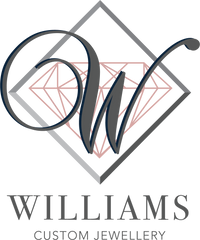WE ANSWER THE TOP 10 CHALLENGING QUESTIONS REGARDING INSURANCE CLAIMS
1. How can your clients trust a jeweller they haven’t met before/ an out of city or out of province jeweller?
- Keith has been a professional Gemologist for 40 years.
- Featured on Dragon's Den and CHCH.
- Trusted vendor of all major Canadian Insurance Companies for 35 years.
- We provide rapid and accurate quote and replacement responses to both insurance companies and clients alike.
- We provide a fair and accurate analysis of the loss, and aim to educate both insurance personnel and clients with a breakdown of the replacement process, and are always available to answer further questions!
- Canada wide and international shipping available at affordable pricing with prompt and secure delivery.
2. Why is our replacement price so much lower than the client’s appraisal value?
- Often the retail appraisal value is highly inflated.
- It is important to note that the retail appraisal value is NOT the price that was paid for the piece at time of purchase.
- Our quotes are calculated based on wholesale pricing.
- We are an independently owned operation, not a franchise. We have cut out several "middle men" to lower our overhead, and in turn can offer replacements at much more reasonable prices WITHOUT sacrificing quality.
THE GOOD, THE BAD AND THE UGLY - APPRAISAL EDITION
3. What are the qualities of a GOOD appraisal?
- Has a beginning, middle and end to the information about the piece.
- Includes a well lit, detailed photo of the item.
- Is accurately dated.
- Includes a price.
- Shows proof of ownership.
- Completed by a reputable gem lab, graduate gemologist, or individual with comparable credentials.

4. How can you spot a BAD appraisal?
- Lacks important detail such as: gold karat weight, diamond or gem quality (carat weight, measurements, clarity, colour, cut), total weight of the item in grams.
- Does not include a photo, or photos are distorted, unclear, far away, do not show detail.
- Likely not completed by a graduate gemologist or an individual with gemological training.

5. How to minimize UGLY replacement disasters
- Head it off at the start by educating underwriters, brokers, insurance personnel and clients.
- Encourage clients to have significant pieces properly documented, photographed and updated every 3-5 years as the market changes.
6. What is the GIA and what important role does it play for diamond replacements?
- The GIA (Gemological Institute of America) is the leading source of knowledge, standard and education within the jewellery industry.
- Is responsible for inventing the diamond grading system, which provides a high standard and consistent benchmark to determine the quality of a stone.
- Each GIA graded diamond or gem will be laser inscribed with a unique number, which will give intricate detail about that stone. This number is archived online and can be accessed at any time using their online report check:

Example of GIA Grading Report

GIA Diamond Grading Scale
7. Diamond quality comparisons (with photos)
- There is often a variance in quality in natural stones due to the way it was formed in the earth, and who it was graded by.
- Grading is subjective to an extent, as not all diamonds are created equal.
- Having your diamond graded by a reputable gemologist or gem lab ensures the most accurate information.

Example of 1.00ct diamond graded IMP1 (Imperfect 1) Clarity. This is representative of the industry average IMP1.

Example of 1.00ct diamond also graded IMP1 due to the dark inclusion right of centre. As you can see, this is better than the average IMP1.
8. Gold - Karat weight and Quality
- Our gold chains are Italian made and imported, while our custom pieces are handmade at our own Toronto studio
- There is a variance in gold manufacturing protocols and procedures depending on the country/ region of origin.
- It is important to note that third world countries have much lower labour costs than in North America or Europe.
- Products manufactured in third world countries also have a much lower quality standard with regard to trademarking their product. (A percentage of trademarked jewellery is actually hollow, base metal that has been plated in 22kt or 24kt gold).
9. What other diamonds do we have access to?
- We have access to Canada Mark diamonds and diamonds of Canadian Origin (It should be noted that because labour costs are higher in Canada, there is a premium associated with the cost).
- We also have access to lab grown diamonds.
- All of our diamonds are ethically sourced.
10. A list of helpful questions to ask clients about their loss at the time of claim placement:
Firstly, will the client allow Williams Custom Jewellery to contact them directly? If not, please see below:
- Is there an appraisal or supporting documentation in the form of gem lab certificates or receipts from the time of sale for the piece(s)? This documentation should give us pertinent specifics such as (See Section 3 Appraisals):
- Total number of stones within the piece
- Diamond/ gem carat weight, measurements, Clarity, Colour, Cut
- Total weight of the piece in grams
- Gold karat weight (if applicable)
- Finger size (if applicable)
- Is there a clear photo available of the piece(s)?
- If not, is there a photo of the client wearing the piece at a gathering (to show proof of ownership)
- If no documentation or photos can be provided, we encourage clients to submit a sketch or browse online for a similar looking piece to give us a starting off point (a picture is worth 1,000 words).
Want to set up a Lunch and Learn seminar for your team? Drop us a line on our Contact Page for more info!
Connect with us:
(905) 637-6377
info@wdgems.com
Connect with us:
(905) 637-6377
info@wdgems.com
